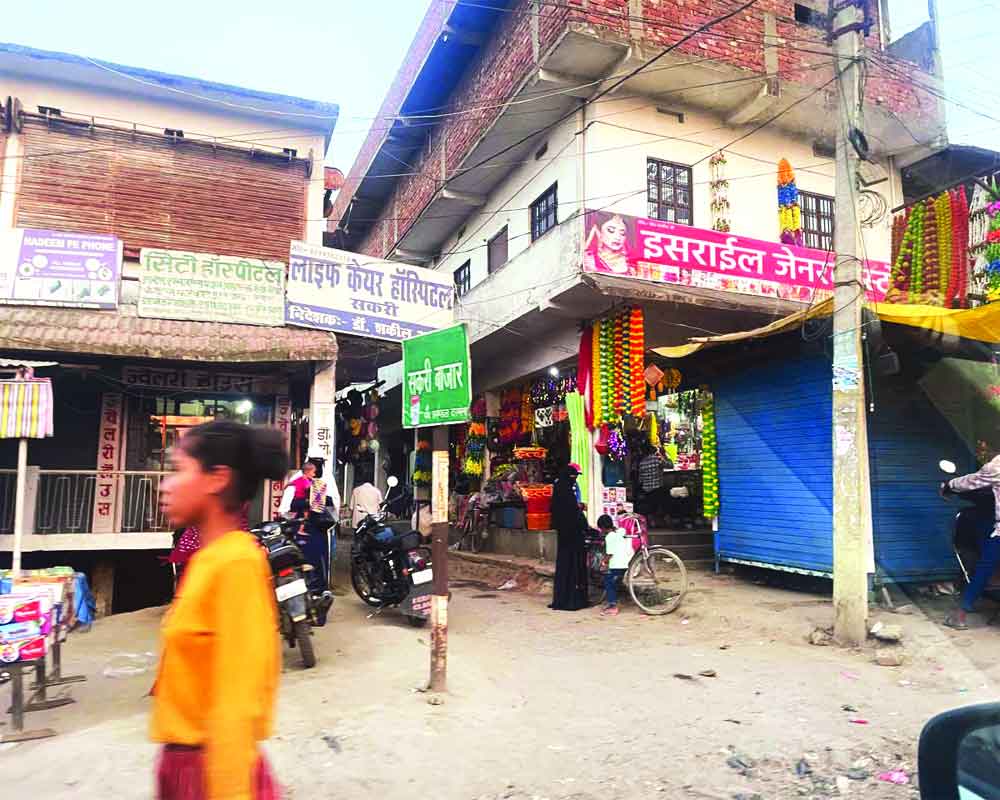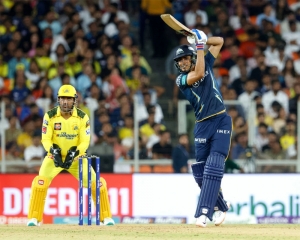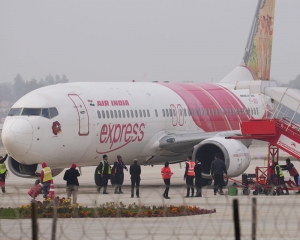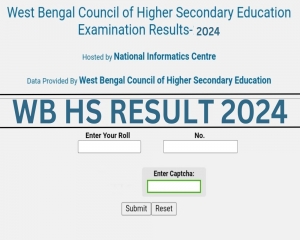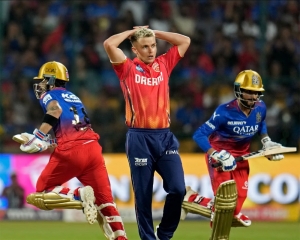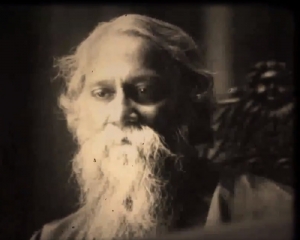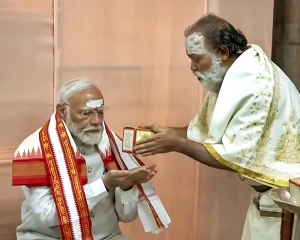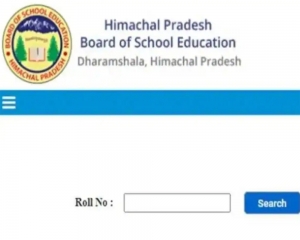In his travels across cities and hamlets of Bihar, DEEPAK KUMAR JHA discovers that the local populace loves to have extensive discourses on politics and engage in conversations where the rhetoric of caste is quite pronounced and audible
Still considered as some of the most backward districts of Bihar — Madhepura, Purnea, Saharsa, Supaul -- the Dehati (rural) thatched structures until a few years ago have all metamorphosed into brick and mortar dwellings amidst lush green mango orchards, banana plants, and corns in the backyard. However, the basic problems of health and education are galore. In every election for the past five decades, people of this region have been promised ‘upliftment’ by various political parties and leaders in the fray but ultimately the cast die is caste-ridden, preventing their holistic development.
Migration, which started in large numbers almost three decades ago when Bihar was in the stranglehold of ‘Jungle Raj,’ continues unabated even under the much hyped ‘Susahsan Raj’.
“Sitting chief minister Nitish Kumar rode over former CM Lalu Yadav’s Raj and people overwhelmingly voted for him going beyond caste and religion, but things are different now. The JDU leader seems to have run out of ideas after a good two terms. His last alliance with Tejaswi Yadav’s RJD kindled some hope on the employment front. But such people-oriented development seems to have taken a backseat while caste and religion-ridden politics is back if you look at the pattern of ticket distribution,” says Pushpendra Kumar, former professor and chairperson of the Patna Centre of the prestigious Tata Institute of Social Sciences (TISS) who is now working full time as a researcher of Bihar’s society and polity.
Partly, Bijli, Sadak and Paani (BSP) are visibly translating into votes but what remains invisible, not only in the Dehati areas but even in towns and cities, are negligible secondary, higher education facilities topped by the lack of healthcare facilities.
Amidst these deficiencies the irony is that a plethora of coaching institutes of engineering, medical, and Government jobs across prominent towns and cities like Patna, Muzzaffarpur and Bhagalpur have come up and there is a mushrooming of private medical clinics and diagnostics centres in the principle districts of Darbhanga, Madhubani, Purnea, Katihar, Gaya and Ara-Chapra.
Come election time, there is ‘Chah (not Chai) Par Charcha’ across cities or hamlets where people love to have extensive discourses over Modi, Nitish, Rahul, Tejashwi or even Obama and Biden. Nonetheless, the rhetoric of caste is loud and audible in the conversation of the locals, sitting on machans (bamboo cane cots), a fact that still dominates the entry and exit of these villages.
The women folk have to volunteer to supply the motley crowd with tea doses. “Din bhar mein kum se kum 50 cup chai banta hai. Inko koyi kaam nahi, din bhar sirf rajneeti ki baat kartey hain. Unka bhi time katatahai,” (More than 50 cups of tea are made for them every day. They have no other work so they spend their idle time talking about politics) observes Neelam Devi, a villager of Satarwar in the Saharsa district of Bihar. The elderly male folks gather as early as 5 am and hang around till 8 am and then come back by 3 pm, remain until dusk at their machans, finding some time to revive the agriculturists in them.
Evening chats are conducted within the precincts of temples every 100 yards with the smoke of incense sticks — one for spiritual rites and the other from mosquito repellants — emanating, providing a mixed essence in the clean atmosphere, resplendent with the aroma of cattle and cow dung heaps.
And during the wedding season and Janeu rituals (thread ceremony), almost every household performs functions and celebrations in its neighbourhood as everybody looks forward to welcoming either an election contestant or any of his/her representatives, preferably the dominant caste of that village or town.
This reporter, who was covering the Lok Sabha 2024 elections in the Supaul area, got the divine opportunity to feast on chaste dehati flavours sitting on a gamcha (cotton scarf) rolled over the raw mud field. The serve was obviously puri, salads, papad, aloo-parwal, tomato chutney, dal-bhaat (cooked rice) which has now been replaced by Pulao alongside new Shaheri add-ons like paneer based subji and mixed-veg. Sweet delicacies, what they call Sukha Mitha (gulab jamun) and Gila Meetha (rasgulla), Boondiya (besan cooked sweet), and lot of curd, is a must to earn the tag of best Bhoj.
However, elderly people regret the fact that in recent times the city culture is dominating as huge decibels DJs loaded on tractors is a must during celebrations.
Further down to a visit to another village Bara in Saharsa, the author halted and then became part of the discussion over a patient, identified as Nepali Jha, being transported from Sadar Hospital to Patna in a serious condition. The patient was transported to Patna in an ambulance accompanied by at least a dozen villagers who, en route, were simultaneously making attempts to establish `contacts’ so that the patient could be admitted at Indira Gandhi Institute of Medical Sciences (IGIMS) in the State’s Capital city. Despite their efforts the IGIMS turned down the patient and he was somehow `accommodated’ at Patna Medical College and Hospital (PMCH). All this while, the villagers accompanying the patient kept insisting with the hospital attendants that the patient be taken to IGIMS, but in vain.
When this journalist witnessed their attempts turning futile and one of them claimed to even approach a sitting MP in Bihar, this reporter of The Pioneer volunteered to help using bureaucratic contacts in the administration for admission of the patient at IGIMS. The ‘mission’ was successful and the IGIMS agreed but by that time the patient had to be put on a ventilator back at PMCH and moving him in that critical condition was not feasible. In this grim milieu tea was offered and unfortunately the news about the patient’s demise simply vanished from media attention. Although the villagers profusely thanked this reporter, they were equally troubled about their local leaders and MPs who were not of any help in their moment of crisis and used foul language to curse their apathy.
“The need for better medical facilities is a must. While several elderly people have moved out of the villages to bigger cities to stay with their children, those who are fond of villages are left in the lurch. Several people have died due to lack of even basic medical facilities in backward areas like in Madhepura, Purnea, Madhepura, and here,” said Gyan Mishra, a local villager.
While the people in the districts of eastern Bihar struggled for a decade to get a sanction for an AIIMS at Saharsa, considered to be most backward, they are now annoyed with both the Central and State Governments as the project has been moved to neighbouring Darbhanga, considered to be prosperous.
The Darbhanga AIIMS was inaugurated by Prime Minister Narendra Modi last year but soon the project got mired in controversy over the tug of war between the neighbouring districts. The matter is now before the Supreme Court.
Last year a group of 20 parliamentarians led by Madhepura MP Dinesh Yadav, cutting across party lines launched an intensive campaign for the construction of an AIIMS in Saharsa, and even met Union Health minister Mansukh Mandviya and handed over a letter of their demand. The letter mentioned that the number of patients suffering from cancer, kidney, heart, liver and other such life-threatening ailments has been quite high in the north-eastern region, comprising Saharsa, Madhepura, Supaul, Khagaria, Purnia, Katihar, Araria and Kishanganj districts.
The letter stated that the Saharsa district magistrate (DM) had communicated to the State Government about the availability of 217.74 acres of land for the construction of an AIIMS, but the State Government announced the allocation of land for the AIIMS in Darbhanga. MPs from Siwan, Nalanda, Karakat, Gaya, Valmikinagar, Gopalganj and Jehanabad had also signed the letter despite knowing that the people from their regions will not be visiting Saharsa for their treatment.
But, when we talk about Bihar, it would be incomplete without the world famed and internationally acclaimed Madhubani paintings which have received several Padma awards. Another delight for the people of Bihar is the folklores of various languages, including charting numbers of Bhojpuri. Most of the popular artists who dominate all rituals including the mega festival of Chhath, is Sharda Sinha, who too has been bestowed with a Padma award.
Most common regional languages spoken in Bihar include Angika, Bhojpuri, Magadhi, Maithili, Magadhi Prakrit, Hindi as well as Urdu amongst other dialects. Currently, Bhojpuri singers have carved a niche for themselves on both social and political platforms and some of them have even become Parliamentarians or are in the current fray to be one. Therefore the raw, rustic lyrics of traditional songs have now been tuned discreetly among the youth on occasions as several of them are tagged as ‘fuhar.’ They have been duly banned by the State Government.
In one’s travels across Mithilanchal, one is struck by the public emotion when people get talking about Madhubani paintings, paan (beetle), makhana, maach (fish) and litti-chokha.
Seema Roy, Mithila Painting artist said earlier the paintings were done by women with vegetable dyes on the walls. “Now it is done on paper. The paintings normally depict village scenes, human and animal forms, gods and goddesses,” Seema said.
“Through your platform let me share the most significant tradition of Bihar, particularly Mithila, as you have already been apprised by its arts and crafts. An unnecessary fish-mutton issue has been derived in the ensuing political campaign by top leaders and we heard the new age media platforms, including social, discuss a lot on this subject. Let me be very clear, be it any day of the week, any festival like Durga Puja (we do not call it Navratra in Bihar), Saraswati Puja, Mahashivratri, or Sawan or any given Hindu auspicious day, we essentially cook and relish on (maach) fish. Mithilanchal is famous as we say pug-pug (every step) is fond of paan, makahana, maach, pokhar (pond),” opines a delighted Birender Thakur, a retired school teacher and villager in Bavangaon in Supaul. He also narrated a poem in the local language which had all the auspicious occasions where it mentioned the serving of non-vegetarian food, particularly fish.
His companion, Nand Kishore Jha, who was part of the discourse, was quick to add that in Bihar non-vegetarian dishes only mean fish and mutton and not chicken or eggs. Although now eggs and chicken delicacies have made their way in the bylanes, chowks, and bazaars the elderly people do not appreciate the inavsion.
Bihar is also famous for its stone pottery, white metal statuettes, bamboo artifacts, wooden toys and leather goods. Several villages around Vaishali are into making of toys. Sikki Work is done by weaving a humble blade of grass into a beautiful basket and mats while Lac bangles are also made in Muzaffarpur. Bihar’s rich traditional and culture legacy must not be drowned by the political din around.
Photos: Deepak Kumar Jha













